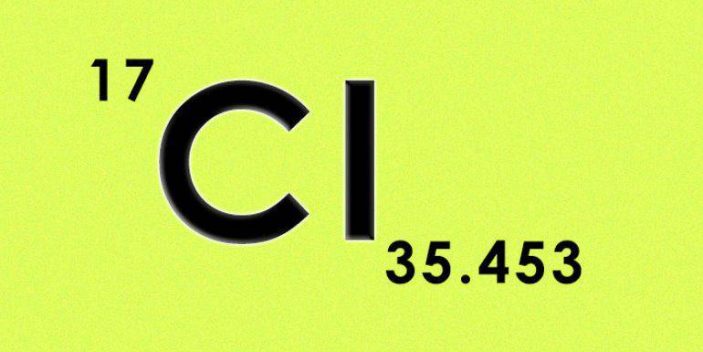Chlorine (Cl) is a chemical element and one of the halogens that occur naturally in bound form especially as sodium chloride (common salt). However, there are other forms namely sylvite (KCl) and as a hydrated chloride of magnesium and potassium (carnallite).
In gaseous form, it can occur as poisonous dichloride (Cl2) or hydrogen chloride gas. When the later reacts with water, it forms hydrochloric acid.
Some cats have been noted to love chlorine smell and they will tend to purr, drool, sniff or rub against objects that have its smell just like they do to catnip essential oil.
Chloride
It refers to negatively charged or ionized chlorine (Cl–). It is the major anion accounting for about 2/3 of anions in most animal’s blood and extracellular fluids. However, it can passively move into cells if it is required to interact with potassium.

Chloride concentration is regulated by a cat’s body and works closely with potassium and sodium.
Sources
Some of the foods that are naturally high in this element include tomatoes, lettuce, celery, seaweeds, and rye. Other foods have small amounts and commonly in combined forms especially with sodium.
Since it is naturally available in small quantities in most food, salts containing chloride such as chlorides of sodium (common salt), ammonium, calcium, potassium are added to various cat foods to meet the minimum required amounts.
When giving your cat water, you need to know that some prefer tap water while others will detect the chlorine taste and not like it. In such a case, go for bottled water.
Functions
- It makes part of hydrochloric acid (HCl) that is necessary for creating an acidic condition for effective gastrointestinal food digestion.
- As an electrolyte, chloride helps in maintaining pH (acid-base balance)
- It maintains osmolarity of the extracellular fluids (osmotic balance)
- It helps in keeping fluid balance
- Together with other electrolytes including sodium and sodium, it participated in nerve impulse transmission.
Regulation
When working optimally, the kidney helps in maintaining both the pH and chloride balance.
Its filtration occurs in the renal glomeruli while its reabsorption occurs passively at the proximal convoluted tubes, actively on the loop of Henle and together with sodium at the distal tubules.
Therefore, any disorders that affect the correct functioning of kidneys may result in an imbalance of this vital anion.
Recommended amounts
Based on dry matter, cat food should have 0.3% chloride both for adult maintenance, growth, and reproduction or 0.75g/1000kcal ME (AAFCO 2015).
Its intake is closely related to sodium since they are often taken as common salt. Therefore, the recommended sodium and chloride intake ratio is 1:1.5.
A high level of serum chloride in cats leads to hyperchloremia characterized by diarrhea, overactive parathyroid glands, and some kidney disorders and it is commonly caused by dehydration.
However, the role of high salt intake on hyperchloremia is not well understood.
On the other hand, too little leads to hypochloremia which may lead to kidney and adrenal gland diseases, vomiting, more potassium being excreted as well as an increase in renal fluids sodium concentration.
Finally, deficiencies can be due to vomiting (loses HCl in the stomach), the use of diuretics as well as adrenal gland and renal diseases.
Other chlorine-based products
Some of the chlorine-based products include chlorhexidine gluconate for skin scrubbing for both your cat and surgeon before an operation.
There are also sprays, ointments, creams, oral rinses, wipes and shampoos based on chlorhexidine gluconate you can use on your feline friend.
Note
Benzalkonium chloride is not safe for cats. There are many products often used as a patio and household cleaners and disinfectants containing it. Ensure you carefully use such products avoid toxification.
Also, sodium hypochlorite (bleach) for cleaning and disinfection can be hazardous to these pets if used in high concentration even if cats tend to like it due to its chlorine smell.
